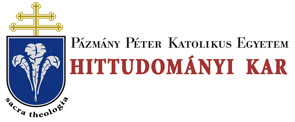Folia Canonica 9. (2006)
STUDIES - Szabolcs Anzelm Szuromi: Canon Law Handbook by Ivo of Chartres
104 SZABOLCS ANZELM SZÚROM! 3 8vb56 57 is not in any connection with that fragment sentence which is situated on top of fol. 39ra. Fol. 39r is the first page of the new quire, therefore it is very probable that this sixth quire was not originally placed after the present fifth quire. Some other problems arise with the context of the Pal. lat. 587. concerning fol. 55r. At the top of this folio starts Book 5 with a new hand (which is the third script style in the main text of this manuscript), but the beginning of this particular book is missing from there. In our opinion this is remarkable, because on fol. 54v, the previous quire ends, and this is the end of the first half of the codex (foil. 1-54), which continues with another 54 folios (foil. 55-108). Moreover, the lining is stronger in this part of the manuscript. It looks as if this second section does not belong to the previous part. If we observe the end of this new section (fol. 108vb) we can find the closing word “AMEN” there. The Ivonian collection probably ends on fol. 106rb with a long canon of St. Augustine, which began on fol. 105rb. After this text there can be found a new rubric: Incipiunt capitula quae exegetis et latinis canonibus et synodis romanis atque decretis pres ulus ac principium romanorum sparsin collecta sunt et engelramno medio matrice urbis episcopo Rome a beato papa adriano tradita xiii kalendas octobris indictione nona quando pro fui negocii causa agebatur. This title marks another canonical collection, namely, the Capitula Angilramni57 from the 8th century. The fundamental goal of this collection was the strengthening of clerical immunity.58 This basic theme is helpful to reconstruct the motive of compilation of the Pal. lat. 587. The script style alters throughout the entire codex, and we can distinguish four hands based on the main text (n° 2: from fol. 39ra; n° 3 : from fol. 55ra; n° 4: from fol. 78v), and another two in the marginal inscriptions (fol. 37va; and46v). It seems to us that the manuscript is a ‘colligatum’ from four parts59 and conserves a special context of the text tradition of Ivo’s work, and furthermore, it was finally enlarged with the rubric of the Capitula Angilramni.60 The basic 56 Altaria si non sunt lapidea scismatis un cf. D. 1 c. 31 de cons.: Altaria, si non sint lapidea, erismatis unctione non consecrentur. Ad celebranda autem diuina offitia ordinem, quem metropolitan! tenent, conprouinciales eorum obseruare debebunt. Friedberg I. 1302. 57 Cf. Decretales Pseudo-Isidorianae et Capitula Angilramni, ed. P. Hinschius (Lipsiae 1863; repr. Aalen 1963) 755-769. 58 Erdő, Die Quellen des Kirchenrechts, 111. W. ULLMANN, The Growth of Papal Government in the Middle Ages (London 21962) 167-189. 59Cf. foil. lra-8va (Hec interim xl capitula ad regulam [...] anathematizandis appareat.); foil. 9ra-38vb (Altaria si non sunt lapidea erismatis un-); 39ra-54vb (Prima sedes est celesti beneficio romana [...] nouelle gentis exortum est.); 55ra-108vb (Si quis uerum pulsatus fuerit in aliqua aduersitate [...] de esse uenturam). 60 Cf. (foil. 106rb)-108vb.
